Coronary Balloon Angioplasty: In-Depth Analysis and Insights
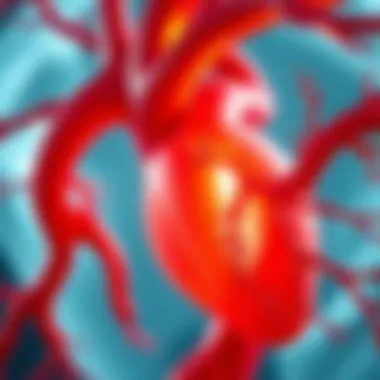
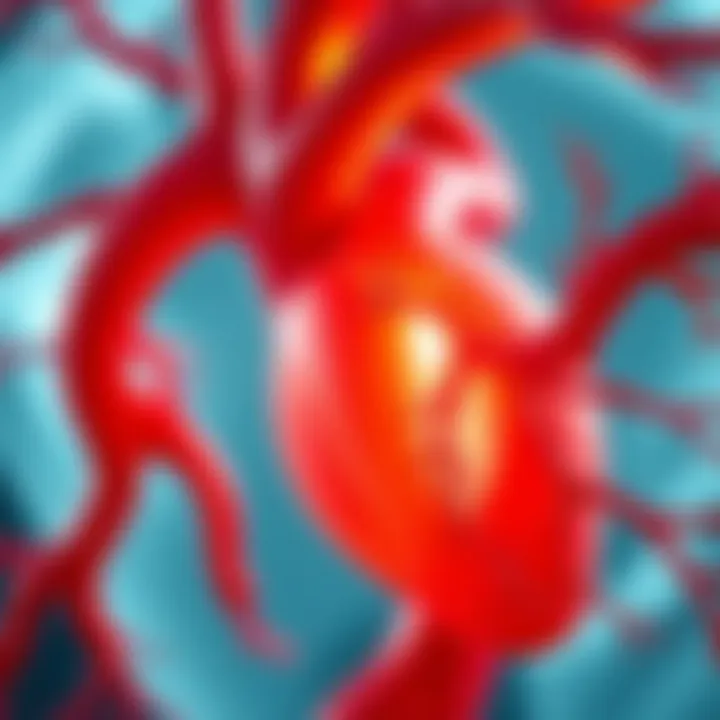
Intro
Coronary balloon angioplasty stands as a pivotal procedure within the realm of cardiovascular treatment, particularly for patients battling coronary artery disease. This method, often recommended when arteries become unnecessarily constricted due to plaque buildup, plays a crucial role in restoring adequate blood flow to the heart muscle. The importance of this procedure cannot be overstated; it has saved countless lives and greatly improved many individuals' quality of life. As we delve deeper into this topic, it’s essential to grasp not just the technicalities but also the evolution of this life-saving technique and how advancements in technology have reshaped its execution.
Coronary artery disease affects millions around the world, acting as a leading cause of morbidity and mortality. Patients often find themselves facing a difficult choice: accept potentially debilitating lifestyle changes or consider medical intervenations. This is where angioplasty comes into play. Through this exploration, we will highlight various facets of coronary balloon angioplasty, including its methodologies, crucial tools, and the broader implications for health outcomes. We'll also return to the roots of this procedure, tracing its genesis and noting its evolution, highlighting the importance of informed patient choices.
As we go along, we'll be sure to include a comprehensive overview of not only the procedure itself but also the research backing its efficacy. In addition, we will shed light on the ongoing innovations in this field, ensuring that the reader gains a holistic understanding of the intricacies involved.
In the following sections, we will analyze the specifics of the methodologies used, discuss advancements in technology and their impact on patient outcomes, and assess the deeper implications of coronary balloon angioplasty in modern medical practice.
Preamble to Coronary Balloon Angioplasty
The significance of coronary balloon angioplasty in the realm of cardiac care cannot be overstated. As a frontline intervention for coronary artery disease, this procedure embodies a critical approach to relieving the burden of arterial blockages. The heart's efficient functioning relies heavily on the unobstructed flow of blood, and when that flow is impeded due to plaque buildup, a host of complications can arise. Understanding the nuances of this intervention is essential for both medical professionals and individuals seeking insight into cardiac health.
Definition and Purpose
Coronary balloon angioplasty is a minimally invasive procedure aimed at widening narrowed parts of the coronary arteries. This expansion allows for enhanced blood flow to the heart muscle, significantly reducing symptoms such as angina and improving overall cardiac function. The essence of this technique lies in the use of a balloon that is strategically guided through a catheter to the site of the blockage. Once in position, the balloon is then inflated, gently compressing the plaque and expanding the artery's diameter.
The purpose of this procedure extends beyond just immediate symptom relief. It serves as a pivotal step in managing coronary artery disease, thus improving the long-term outlook for patients. For many, angioplasty becomes a lifesaver, providing a quick return to daily life and activities, restoring peace of mind for patients and families alike.
The Underlying Need for Intervention
The rationale behind the necessity for coronary balloon angioplasty emerges from the alarming statistics surrounding heart disease. Coronary artery disease remains a leading cause of mortality globally. When arteries become occluded, crucial organs like the heart are deprived of adequate oxygen-rich blood. The consequences of such deprivation can be severe—ranging from chest pain to life-threatening heart attacks.
Patients typically find themselves eligible for this intervention when non-invasive measures such as medication and lifestyle changes fail to alleviate their condition.
- Proactive Considerations: In many cases, early detection through diagnostic techniques like angiography can unveil the extent of arterial damage, prompting timely intervention.
- Risk Mitigation: The decision to proceed with angioplasty often weighs the risks of procedure complications against the high stakes of untreated coronary artery disease.
- Quality of Life: For individuals grappling with debilitating symptoms, this procedure not only restores physical health but also enhances day-to-day living, enabling better emotional and psychological well-being.
In summation, coronary balloon angioplasty stands at the forefront of cardiac intervention, intertwining technological innovation with patient-oriented care. Its role is vital, providing comprehensive treatment for those impacted by coronary artery disease and underscoring the need for ongoing research and improvement in cardiovascular health outcomes.
Historical Context and Development
Understanding the historical context and development of coronary balloon angioplasty is essential in grasping its significance in the field of cardiology today. This procedure has a rich history that reflects the evolution of medical technologies, techniques, and patient care practices. Over the years, angioplasty has transformed from an experimental procedure to a standard practice that has saved many lives and improved the quality of life for countless patients.
Pioneering Efforts in Angioplasty
The journey of coronary balloon angioplasty began in the late 20th century, specifically in 1977, when Dr. Andreas Gruentzig performed the first successful angioplasty on a living patient in Zurich, Switzerland. This marked a watershed moment in cardiology. Before this, patients suffering from coronary artery disease often faced serious surgical interventions, such as coronary artery bypass grafting. Gruentzig’s pioneering approach utilized a balloon catheter, which, when inflated at the site of a blockage, opened the artery and improved blood flow without the need for major surgery.
This initial success not only validated the concept but also paved the way for further research and development in this domain. The early days were fraught with challenges. At first, many physicians were skeptical of non-surgical options, dismissing them as experimental or unsafe. However, as reports of successful outcomes began to accumulate, confidence in the method grew, and early adapters began incorporating it into their practices.
Cohorts of patients who underwent this innovative procedure started demonstrating significant improvements. Not only did angioplasty reduce symptoms such as chest pain, but it also lowered hospital stays and the associated costs of heart disease care. The data showcased an optimistic outlook for patients, thus sparking further investment into refining the technique.
Evolution of Techniques and Technology
As the years went by, the techniques and technologies employed in coronary balloon angioplasty evolved remarkably. Initially, the procedure was done using simple balloon catheters. However, as experience and understanding of coronary anatomy improved, so did the designs of these catheters. The introduction of the degradable balloon concept in the 1980s added an essential layer of patient safety, as these balloons diminished the risk of prolonged artery occlusion.
Key advancements that shaped the evolution include:
- The advent of drug-eluting stents, which release medication to help prevent re-narrowing of the arteries after inflation. This innovation significantly decreased the rate of restenosis.
- The incorporation of imaging technologies, such as intravascular ultrasound and optical coherence tomography, which allow cardiologists to gauge the state of blood vessels with precision. These tools enhanced not only the effectiveness of the procedure but also improved patient outcomes.
- Improvements in catheter technology have allowed for smaller, more navigable devices, facilitating procedures in previously hard-to-reach areas of the coronary system.
The evolution of these techniques speaks volumes about the nature of medical advancements — a continuous search for enhanced patient care. It has turned coronary balloon angioplasty into a less invasive, more efficient option compared to traditional surgery. This adaptation in therapeutic strategies highlights the incredible commitment of the medical community toward improving cardiac health.
Mechanism of Action
Understanding the mechanism of action behind coronary balloon angioplasty is essential in grasping how this procedure successfully alleviates symptoms of coronary artery disease. The blending of technology and biology in this context offers a unique insight into the intricate workings of the heart and its arteries. At its core, the procedure addresses the fundamental issue of arterial blockages, which can significantly impair blood flow and, subsequently, heart functionality. This section will elucidate further the two main aspects of this mechanism: understanding coronary blockages and the pivotal role that balloon inflation plays.
Understanding Coronary Blockages
Coronary blockages are critical issues in cardiovascular health. They occur when arteries that supply blood to the heart muscle become narrowed or blocked, primarily due to atherosclerosis, which is a build-up of cholesterol and other materials. Conditions such as high blood pressure, diabetes, and smoking can exacerbate this issue, making it even more detrimental.
The significance of comprehending these blockages lies in their ability to cause serious complications, including angina—chest pain resulting from reduced blood flow—and heart attacks. When the heart muscle does not receive enough oxygen-rich blood due to these blockages, the entire system bears the brunt of this insufficient supply.
Understanding the specific locations of these blockages is essential during the angioplasty procedure. Many times, imaging techniques such as angiography may be utilized prior to the procedure to ascertain the size and extent of the blockage. By identifying which arteries are affected, medical professionals can strategize accordingly.
Key Points:
- Coronary blockages stem from atherosclerosis and related conditions.
- They can lead to angina and heart attacks, posing risks to patient health.
- Imaging techniques are crucial to spot blockages before intervention.
The Role of Balloon Inflation
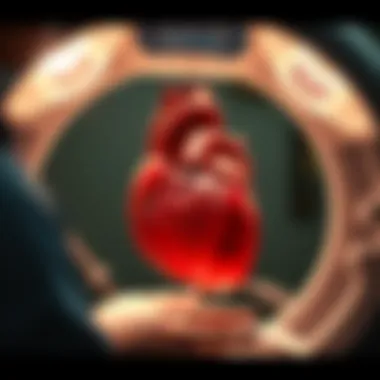
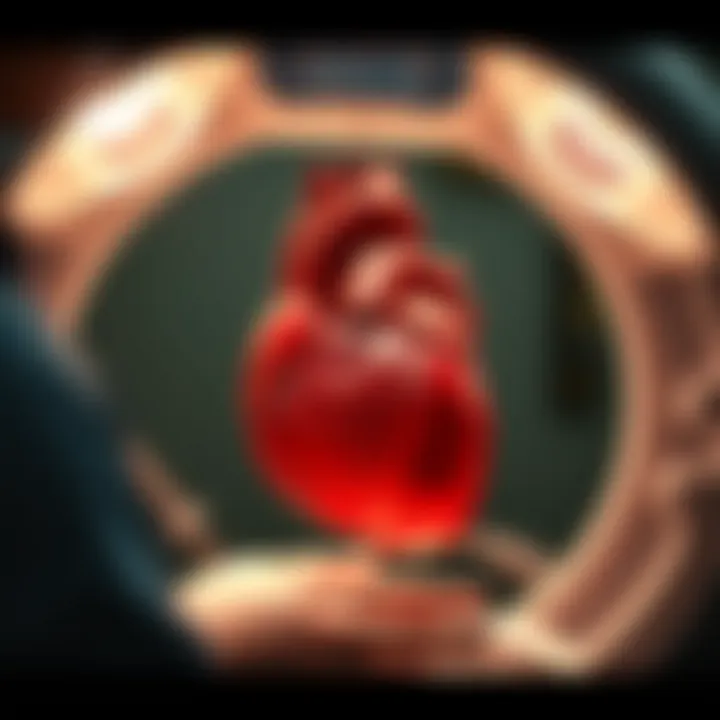
Once the blockages are understood, the actual process of balloon angioplasty takes center stage. Balloon inflation serves as the mechanism that physically alleviates the blockage. A small, flexible balloon is positioned within the narrowed artery and then inflated. This balloon expands against the arterial wall, compressing the fatty deposits or plaque, and thereby enlarging the lumen through which blood can flow.
This process not only widens the artery but also, temporarily, can disrupt the plaque, making it crucial for restoring adequate blood flow. After inflation, the balloon is deflated and removed, allowing for smooth blood circulation. Sometimes, a stent—a small mesh tube—may be placed in the artery during this process to help keep the vessel open long after the procedure.
It's important to underscore that while balloon inflation is typically effective, it's not without its challenges. Some patients may experience a phenomenon called "restenosis," where the artery gradually narrows again post-procedure. This highlights the need for effective follow-up care and monitoring.
"Balloon angioplasty not only opens the blocked arteries but also acts as a reminder of the heart’s resilience, even when faced with significant challenges."
Highlights:
- Balloon inflation compresses plaque against the arterial wall.
- Restenosis can occur, underscoring the importance of follow-up.
- Stents may be utilized to ensure longevity of the intervention.
With a solid grasp of coronary blockages and the role of balloon inflation, one gains a comprehensive understanding of the mechanism that makes coronary balloon angioplasty a pivotal procedure in treating coronary artery disease.
Clinical Procedure
The clinical procedure of coronary balloon angioplasty stands as a cornerstone in treating coronary artery disease (CAD). With the rise in prevalence of cardiovascular disorders, understanding the intricacies of angioplasty becomes all the more crucial. This segment not only outlines the procedural steps but also places emphasis on its clinical significance, shedding light on the essential tools and techniques that make this intervention possible.
Step-by-Step Overview of the Procedure
- Preparation: Before diving into the operative stage, patient assessment is essential. This includes diagnostic imaging to determine the location and severity of blockages.
- Anesthesia: Once agreed upon, local anesthesia is administered. Pre-medication may also be considered to manage anxiety and discomfort.
- Access Site: A catheter is inserted, usually through the femoral or radial artery. The choice of access depends on various factors including the physician’s preference and patient anatomy.
- Navigation to the Coronary Artery: The catheter is carefully threaded through the vascular system towards the site of the blockage. Fluoroscopy aids in visualizing this pathway.
- Balloon Inflation: Once positioned accurately at the blockage, a deflated balloon is introduced into the narrowed artery. Gradual inflation opens up the vessel, compressing the plaque against the arterial wall.
- Stent Placement (if necessary): Often, a stent is deployed to maintain the opened artery. This small mesh tube acts as a scaffold ensuring the artery remains open in the long term.
- Post-Procedure Care: After the procedure, the catheter is removed, and pressure is applied to prevent bleeding at the access site. Monitoring typically follows for any immediate complications.
- Discharge and Follow-Up: Depending on individual recovery, patients usually go home on the same day or the following day, with specific follow-up appointments scheduled to monitor healing.
This careful progression ensures that patients receive a treatment tailored to their specific condition, promoting better outcomes and a quicker return to normalcy.
Tools and Equipment Used
The tools employed in coronary balloon angioplasty are as crucial as the hands that wield them. Each piece of equipment is designed to facilitate a safe and effective procedure:
- Balloon Catheters: These are specially designed to expand and compress arterial blockages. They come in various sizes, tailored to the specific needs of the patient.
- Guidewires: Thin wires that help navigate through blood vessels towards the targeted area. They provide support for the balloon catheters during placement and inflation.
- Intravascular Ultrasound (IVUS): Sometimes used to obtain detailed images within coronary arteries, IVUS helps in assessing the effectiveness of the procedure.
- Fluoroscopy Equipment: Live imaging that provides real-time visualization during the procedure. It guides physicians accurately to the site of blockage.
- Stents: If needed, these are used to permanently open the arteries post-inflation, providing structural support against re-narrowing.
- Antiseptic Solutions and Dressings: Essential for preventing infection at the access site after the procedure is completed.
In sum, a meticulous approach using these tools aids medical professionals in delivering optimal care during coronary balloon angioplasty, enhancing patient safety and procedural success.
Patient Assessment and Selection
Patient assessment and selection is a vital part of coronary balloon angioplasty, as it ensures that only the most suitable candidates undergo the procedure. Understanding the individual patient's specific condition is essential not only for effective intervention but also for minimizing the risk of complications. A thorough evaluation forms the backbone of a tailored treatment plan, laying out the ground for meeting desired outcomes.
Criteria for Candidate Evaluation
When assessing a patient for coronary balloon angioplasty, several criteria are taken into account. These can significantly impact the procedure's success and the patient's overall health. Some key factors include:
- Anatomy of Coronary Arteries: Doctors evaluate the location and severity of blockages in the coronary arteries. Measurements such as the extent of obstruction and the number of arteries involved guide treatment decisions.
- Patient Symptoms: Symptoms experienced by the patient, like chest pain or shortness of breath, are key indicators. Their frequency and intensity can signal the urgency and need for intervention.
- Overall Health Condition: Comorbidities such as diabetes, hypertension, and heart failure play a crucial role in candidate selection. These underlying conditions can complicate the procedure and influence recovery outcomes.
- Lifestyle Factors: Factors like smoking, diet, and exercise habits inform the decision-making process. Patients willing to make lifestyle changes post-procedure generally have better success rates.
- Age and Gender: While these factors do not automatically exclude a patient, they are considered, as they may correlate with differing risks and anatomical considerations.
The balance of these factors helps medical professionals determine whether a patient will benefit from angioplasty or if alternative treatments like coronary artery bypass grafting may be more suitable.
Risks and Benefits of the Procedure
Every medical procedure comes with its set of risks and benefits, and coronary balloon angioplasty is no exception. Here’s a closer look:
Benefits:
- Immediate Relief: Many patients experience almost instant relief from symptoms such as angina following the procedure.
- Minimally Invasive: Compared to open-heart surgery, angioplasty is typically less invasive, leading to shorter recovery times.
- Enhanced Blood Flow: The primary goal of the procedure is to restore blood flow to the heart, reducing the risk of heart attacks.
- Improved Quality of Life: Patients often find that their ability to engage in everyday activities significantly improves post-procedure.
Risks:
- Possible Complications: Complications, although rare, can occur, including bleeding, infection at the site of catheter insertion, or damage to coronary arteries.
- Restenosis: There is a possibility that the artery may become blocked again over time, a condition known as restenosis. Thus, long-term follow-up care becomes imperative.
- Psychological Effects: Facing a heart procedure can lead to anxiety or stress, necessitating proper emotional support for candidates.
"Selecting the right candidate for coronary balloon angioplasty not only impacts the immediate outcome but also the long-term health of the patient. It’s a critical step in ensuring successful intervention."
In summary, patient assessment and selection lays the groundwork for the angioplasty procedure. By scrutinizing candidate-specific factors and understanding the various risks and benefits, healthcare professionals can optimize treatment strategies that best suit individual needs.
Post-Procedural Care
Post-procedural care following a coronary balloon angioplasty is critical to ensuring the best possible outcomes for patients. Through proper management after the procedure, healthcare providers can monitor recovery, address any complications promptly, and set a solid foundation for long-term health. This phase of care typically includes monitoring and recovery, as well as long-term follow-up to track the patient's progress and reinforce healthy behaviors.
Monitoring and Recovery
After a coronary balloon angioplasty, patients are often moved to a recovery area for close monitoring before they can go home. During this time, medical staff check vital signs including heart rate, blood pressure, and oxygen levels. This period of observation is essential. A careful watch allows for the quick detection of any issues that may arise post-procedure. Patients, fresh from the cath lab, may experience discomfort or bruising at the insertion site; this is normal, yet requires attention to ensure there's no excessive bleeding or infection.
The initial few hours post-angioplasty are vital as healthcare providers assess how well the blood flow has improved and if there are any immediate complications. Patients are typically encouraged to rest and may be advised to limit movement to speed up the recovery process.
Notably, factors such as age, overall health, and any additional medical conditions play a role in recovery. A nurse or doctor might engage in discussions about medications, such as antiplatelet agents, that will help prevent blood clots. Some common medications prescribed include aspirin and clopidogrel, each playing a role in overcoming the risks associated with restenosis—the re-narrowing of the artery.
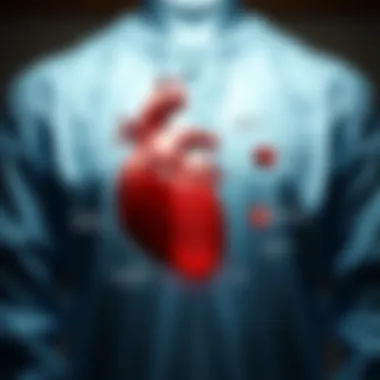
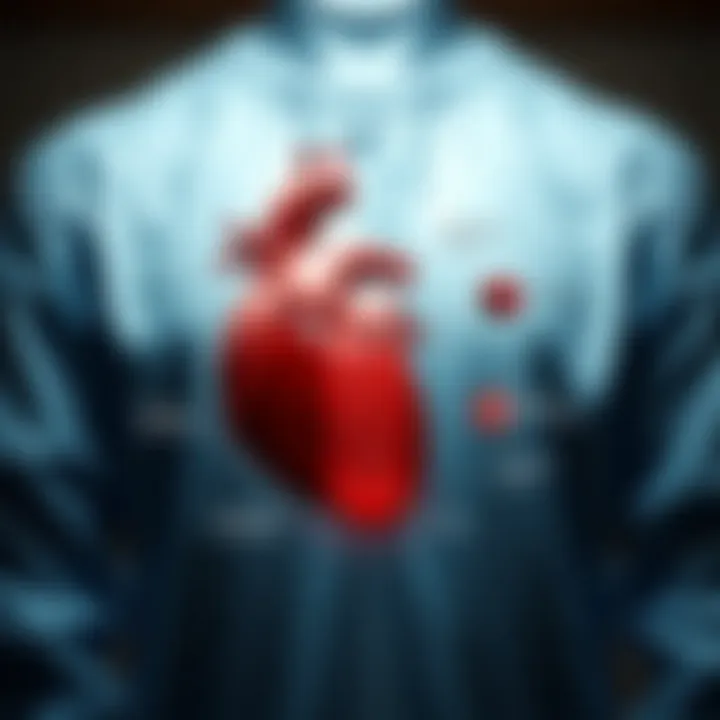
"Proper monitoring post-procedure is crucial. It ensures that any potential complications are caught early, which can significantly improve recovery outcomes."
Long-Term Care and Follow-Up
Long-term care after coronary balloon angioplasty doesn't stop at leaving the hospital. Continuous follow-up appointments are essential and can greatly impact a patient’s longevity and quality of life. Typically, doctors will schedule follow-ups to evaluate the success of the treatment and the patient’s overall heart health. These visits can include checking the effectiveness of medications or taking blood tests to monitor cholesterol levels.
Moreover, lifestyle changes are often a crucial discussion point during follow-ups. A healthcare provider may recommend dietary changes, such as a heart-healthy diet rich in vegetables and low in saturated fats.
Exercise is also a cornerstone of recovery. Depending on individual circumstances, cardiac rehabilitation programs might be suggested. These provide guided workouts tailored for safe physical activity, often leading to better outcomes for patients.
Patients should be encouraged to remain attentive to their bodies. Any symptoms like chest pain or shortness of breath should not be taken lightly and must be discussed immediately with healthcare professionals.
Overall, maintaining close communication with healthcare providers, adhering to prescribed medications, and making informed lifestyle choices can greatly enhance recovery following coronary balloon angioplasty.
Comparative Treatment Options
In the realm of cardiac care, coronary balloon angioplasty is one of several interventions available to address coronary artery disease, a condition characterized by narrowed or blocked arteries that supply blood to the heart. Contrasting different treatment options sheds light on the specific applications, advantages, and limitations each one brings to the table. Understanding these choices not only guides clinicians in making evidence-based decisions but also helps patients navigate their options effectively.
Coronary Bypass Surgery Versus Angioplasty
Coronary bypass surgery, often dubbed as an open-heart procedure, involves creating a new pathway for blood to flow to the heart. Surgeons roadblock the narrowing by grafting healthy arteries or veins from other parts of the body. This is a more invasive method compared to angioplasty, which primarily relies on balloon inflation to clear blockages. While both procedures have their merits, a few considerations can tip the scales in favor of one versus the other:
- Invasiveness: Bypass surgery is significantly more invasive, leading to longer recovery times. In contrast, angioplasty is typically a minimally invasive technique.
- Hospital Stay: Following bypass surgery, patients usually require a longer hospital stay, often upwards of a week, unlike angioplasty, which may allow patients to go home the same day.
- Conditions Trafficking Procedures: Angioplasty may be the go-to for patients with one or two artery blockages. However, more complex cases, particularly with multiple blockages or severe coronary artery disease, often lean towards bypass surgery.
- Long-term Outcomes: Studies show that while angioplasty can effectively restore blood flow, it may not address the underlying issue in some patients. Bypass surgery, however, offers longevity in certain scenarios.
Ultimately, the choice may hinge on detailed diagnostics and personal preferences. As one physician aptly put it, "It's no one-size-fits-all approach; every heart tells a different story."
The Role of Stents in Angioplasty
Stents are small metal tubes inserted during angioplasty to help keep an artery open after it has been widened. The inclusion of stenting has revolutionized how coronary balloon angioplasty is performed, leading to significantly improved outcomes for many patients. Their usage entails several notable benefits:
- Reduced Chance of Re-narrowing: One of the critical advantages of stents is their ability to reduce the risk of restenosis, or re-narrowing of the artery. They essentially act as a scaffold, helping maintain optimal blood flow over time.
- Drug-Eluting Stents: These specially designed stents are coated with medication that is slowly released into the artery, minimizing the chances of scar tissue formation and further developing blockages.
- Versatility: Stents can adapt to various sizes and shapes of arteries, making them suitable for different types of coronary blockages.
Patients often express a sense of reassurance with stents in place, knowing they provide additional support to the arterial walls. As stated by a cardiac interventionalist: "Stents make our job not only easier but also enhance the durability of the results for our patients."
In summary, while angioplasty and bypass surgery both serve vital roles in treating coronary artery disease, evaluating their effectiveness alongside emerging innovations such as stenting assists in determining the ideal patient care path. Choosing the right treatment requires careful consideration of individual medical profiles and preferences, combined with the clinician's expertise.
Technological Advancements
The landscape of coronary balloon angioplasty has been significantly sculpted by various technological advancements. These innovations not only enhance the procedure's efficacy but also aim to improve patient outcomes and safety. As coronary artery disease continues to challenge the medical world, understanding these advancements is crucial for those involved in the field of cardiology, whether they are students, researchers, or seasoned professionals.
Innovations in Balloon Design
Balloon design has witnessed remarkable evolution since the inception of coronary angioplasty. Originally, balloons were constructed from materials that were often less pliable and could pose a higher risk of rupture. Today's balloons are engineered with advanced materials that allow for optimal inflation and deflation, reducing complications and improving patient safety.
Key advancements include:
- Low-Pressure Balloons: These balloons can expand effectively without requiring high inflation pressures, minimizing trauma to the artery.
- Drug-Eluting Balloons: Some balloons are now coated with medications that help prevent restenosis, or the re-narrowing of the artery after the procedure. This innovation is particularly critical in treating lesions that are prone to relapse.
- Scalloped Balloons: Designed to better adapt to the arterial anatomy, these balloons provide a more efficient dilation and can improve the overall outcome of the procedure.
Furthermore, the ongoing development of biodegradable balloons shows promise. After successfully serving their purpose, they dissolve over time, eliminating the need for additional surgeries to remove stents. This blend of innovation and practicality is paving a new pathway in cardiac interventions—one that is likely to expand in the coming years.
Imaging Techniques for Enhanced Outcomes
The integration of imaging techniques into coronary balloon angioplasty has proven to be a game changer. Traditional angiography is often supplemented or replaced by more advanced imaging modalities that provide a clearer picture of the coronary landscape:
- Optical Coherence Tomography (OCT): This technique offers a high-resolution view of the interior of the blood vessels, helping cardiologists assess the severity of blockages more precisely and determine the best course of action.
- Intravascular Ultrasound (IVUS): IVUS provides cross-sectional images of the artery walls, allowing for real-time visualization during the procedure. This offers an insight into the plaque composition and arterial structure, aiding in decision-making for effective treatment.
In the realm of angioplasty, effective visualization can mean the difference between success and complications. The advancement of imaging technologies ensures better planning, execution, and follow-up of cardiovascular interventions.
- 3D Reconstruction: Ongoing advancements in software algorithms are allowing for intricate 3D reconstructions of arterial structures, providing a holistic image of the coronary anatomy that guides interventions more accurately.
By incorporating these advanced imaging techniques, practitioners can significantly enhance procedural outcomes, providing patients with safer and less invasive options for treating coronary artery disease. As we witness the merging of technology with clinical practice, it reinforces the importance of continuous learning and innovation in improving health care.
The path ahead for coronary balloon angioplasty will undoubtedly be shaped by these technological strides. With a commitment to enhancing both procedure efficacy and patient safety, advancements promise a brighter future for those affected by coronary artery disease.
Outcome Measures
The evaluation of coronary balloon angioplasty doesn't stop at the moment the procedure concludes. In fact, one of the most pivotal aspects of understanding its effectiveness is through outcome measures. These measures provide a bird's-eye view of how successful the intervention has been and what it means for the patients involved.
When medical professionals discuss outcomes, they're not just rattling off some numbers; they are diving into the fruits of meticulous research and clinical evaluation. The importance of these measures lies not only in the statistical analysis but also in the real-world implications for patient health and ongoing treatment options.


Outcome measures typically encompass several dimensions, including both clinical and patient-reported outcomes. The former includes statistical rates of complications, the necessity for repeat procedures, and long-term survival rates, whereas the latter focuses on patients' perceptions of their health status following treatment. Evaluating these dimensions presents a comprehensive understanding of not just survival, but the quality of life that patients experience afterwards.
"In this ever-evolving field, staying tuned in to outcome measures means holding the pulse on cardiac care."
Statistical Data on Success Rates
The success rates of coronary balloon angioplasty are not just academic numbers; they illuminate the actual effectiveness of this intervention. Studies frequently denote that the success rate of balloon angioplasty for opening blocked arteries is between 80-90% for elective cases, depending largely on factors such as the patient's overall health, the complexity of their coronary disease, and the specific anatomy of the arteries involved. In contrast, unplanned cases, like emergencies, might see lower success rates, revealing the variability within clinical scenarios.
Additionally, understanding success isn't solely about immediate outcomes. It's essential to consider the durability of these results. Research indicates that about 50-70% of patients maintain favorable outcomes for five years, but this can fluctuate based on a myriad of social, health, and lifestyle factors. An additional aspect that deserves attention is how stenting has influenced these rates, as it often improves the long-term patency of the artery compared to balloon angioplasty alone.
Patient Satisfaction and Quality of Life
When we wade through the technicalities and figures, we inevitably surface to a core question: How do patients feel post-procedure? Patient satisfaction is a crucial component of any medical intervention, especially one as intimate as coronary balloon angioplasty. Studies show that many patients report significant improvements in their quality of life post-procedure. Factors such as reduced chest pain and increased physical activity often lead to boosted morale and a return to normal daily routines.
However, satisfaction doesn't come from the procedure alone. It's also deeply linked to the communication patients have with their healthcare providers, the clarity of expectations before the surgery, and the support systems in place afterwards. In fact, some reports suggest that a solid doctor-patient relationship can heavily influence satisfaction outcomes, making it a multidimensional affair rather than a simple yes or no answer.
In essence, incorporating patient-reported outcomes is not a new-age trend; it's a critical move toward a patient-centered healthcare model. This holistic perspective adds depth to what we mean by success in coronary balloon angioplasty.
Complications and Adverse Effects
Complications and adverse effects are crucial aspects to consider when discussing coronary balloon angioplasty. Although the procedure has proven to be effective for many patients suffering from coronary artery disease, it isn't without its risks. Understanding what can go wrong during or after the intervention provides essential insights for patients, healthcare professionals, and researchers alike.
The reality is that even a well-executed procedure can have unintended consequences. Knowing the potential complications helps in decision-making, risk assessment, and setting realistic expectations for recovery. Therefore, it’s imperative to address these issues thoroughly to enhance the overall quality of care and patient safety.
Potential Risks During and After Procedure
Even in routine cases, the potential risks associated with coronary balloon angioplasty can be significant. Some of the most common complications that may arise include:
- Vascular Complications: Damage to the blood vessels can occur, potentially leading to bleeding or hematoma formation. Patients with fragile vessels may be at heightened risk.
- Arrhythmias: Irregular heartbeats are another potential risk during and immediately after the procedure. This can lead to temporary discomfort and necessitate additional interventions.
- Myocardial Infarction: In rare cases, there’s a risk of a heart attack occurring during or after angioplasty, often due to a thrombus formation or inadequate blood flow.
- Re-stenosis: The process of narrowing may recur, leading to the need for further interventions, despite receiving treatment. This particular complication can be frustrating for both patients and doctors.
- Allergic Reactions: Some patients may experience allergic reactions to contrast dyes used during the procedure, leading to a range of symptoms from mild itching to severe skin reactions.
"Every procedure carries risks, but understanding them is key to handling expectations and outcomes."
Aside from these complications, patients should be mindful of longer-term risks, like the possibility of needing repeat angioplasty or eventual bypass surgery, should complications arise.
Management of Complications
Effective management is essential to minimize the impact of complications arising from coronary balloon angioplasty. The healthcare team plays a pivotal role in this process. Some strategies that can be employed include:
- Monitoring: Patients are often kept under careful observation post-procedure to quickly identify any signs of complications. Continuous ECG monitoring can help detect arrhythmias early on.
- Medications: Immediate management might include medications such as anticoagulants or antiplatelet agents to prevent thrombus formation. In cases of arrhythmias, beta-blockers or other antiarrhythmic drugs may be utilized.
- Interventional Follow-Up: If complications such as re-stenosis occur, interventional follow-ups using additional angioplasty or placement of drug-eluting stents can be effective strategies.
- Patient Education: Empowering patients with knowledge about potential signs of complications can lead them to seek medical advice sooner, which can be critical in a timely intervention.
- Adapting Techniques: Developments in angioplasty techniques also focus on reducing complications. For example, using high-resolution imaging before and after the procedure can help tailor interventions to each patient's anatomy more effectively.
Navigating through the complications associated with coronary balloon angioplasty is not straightforward. However, with a well-structured management plan, the risks can be minimized, ultimately enhancing patients' quality of life.
Future Perspectives
The landscape of coronary interventions is ever-evolving, and it's crucial to keep an eye on the horizon. The future of coronary balloon angioplasty holds great promise, as advancements in techniques and technologies continue to shape the field. Understanding these trends can lead not only to improved patient outcomes but also to more selective approaches in treatment, ensuring that cardiac care evolves with both the science and the needs of patients.
Emerging Techniques in Cardiac Interventions
When we think about the future of coronary balloon angioplasty, we can't overlook the exciting emerging techniques that are coming into play. New methods such as drug-coated balloons are changing the game; they deliver medication directly to the artery walls, potentially reducing the chances of restenosis, a common problem associated with traditional angioplasty. This approach has shown promising results, leading to discussions about integrating these advanced methods as standard practices.
In addition, the incorporation of robotics and artificial intelligence into procedural strategies is gaining traction. Imagine the potential of robotic-assisted angioplasty, where precision maneuvers could minimize damage to surrounding tissues while enhancing the effectiveness of the procedure itself. It seems we're not too far off from having such capabilities.
Moreover, bioresorbable stents are also coming into focus. Unlike their metallic counterparts, these stents dissolve over time, offering support when it’s most needed without leaving a long-term foreign object in the body. This novelties could fundamentally change how we approach not only angioplasty but also patient recovery, making it a less invasive procedure in the long haul.
Research Directions and Innovations
As we look ahead, the importance of ongoing research cannot be understated. Investigating the outcomes of hybrid procedures, which combine techniques like angioplasty with bypass surgery, can provide insights into the most effective treatments for complex CAD cases. The exploration of personalized medicine is another fascinating area, where treatments are tailored based on an individual’s genetic makeup or specific physiological conditions. Such advancements could optimize intervention strategies, enhancing efficacy and safety.
Furthermore, ongoing clinical trials are pivotal for validating new methodologies and technologies. Engaging with interventional cardiology communities can help keep the momentum going. Networking among professionals and collaborating across institutions can foster an environment of innovation that ultimately benefits patients.
“Innovation is the calling card of the future. Embracing it means we're always prepared for what lies ahead.”
It’s also essential that the integration of new techniques maintains a balance with evidence-based guidelines. As procedures advance, we must ensure that improvements are rooted in robust data and clinical outcomes. Therefore, a continuous loop of feedback from clinical practice back into research will be essential. Everyone, from students to seasoned professionals, plays a role in driving this cycle that enriches our understanding and practice of cardiac interventions.
Closure
In this comprehensive article, the examination of coronary balloon angioplasty has brought to light several key aspects that underscore its significance in the realm of cardiovascular intervention. It is evident that this procedure plays a crucial role in treating coronary artery disease, optimizing patient outcomes, and enhancing overall quality of life. By delving into the intricacies of the technique, its historical context, and its evolution over the years, this article provides a solid foundation for understanding the impact and necessity of ongoing research and innovation in this field.
Synthesizing Knowledge for Future Applications
A synthesis of the knowledge presented throughout this article reveals the multifaceted nature of coronary balloon angioplasty. Understanding its role entails not just grasping the technical procedures, but also recognizing the nuances of patient selection, postoperative care, and the potential for complications. All of these components interact in ways that can significantly affect patient outcomes.
"Every stroke of progress in coronary balloon angioplasty paves the way for more effective treatments down the line."
In looking at future applications, it is critical to highlight how ongoing advancements in technology can influence the success rates and safety of the procedure. With innovations in balloon design, stent technology, and imaging techniques, the chances of achieving favorable results are markedly increased. Furthermore, cultivating a thorough understanding of patient selection criteria and post-procedural care enhances the likelihood of positive long-term outcomes.
The continued exploration of emerging techniques in cardiac interventions and the pursuit of research directions are vital for the future of coronary balloon angioplasty. Not only will these efforts help in refining existing practices, but they also hold the promise of uncovering new methodologies that could fundamentally transform care for individuals with coronary artery disease.



